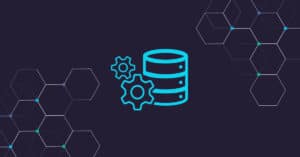The Major Differences between HVR and K3 ETL
Is your organization considering a data solution? Here is a high-level comparison of the HVR and K3 ETL platforms to determine which option is a better fit.
- Ease of use: HVR requires some expert-level coding knowledge; K3 visualizes and normalizes data with no coding required.
- Scalability: HVR is challenging to scale due to its high-code environment; K3 offers a low-code environment with one price.
- ETL capabilities: HVR does not offer ETL; K3 ETL is a powerful, low-code software that can be rapidly implemented.
- Change data capture (CDC) capabilities: HVR is a powerful CDC (Change Data Capture) solution; K3 offers a CDC toolset that empowers IT departments and data-dependent decision makers.
- Data Deployment: Both HVR and K3 offer cloud and on premise deployments. K3 also offers ETL and CDC for hybrid data integration from anywhere to anywhere.
THE BIG TAKEAWAY:
- HVR requires in-depth coding knowledge so it’s difficult to scale.
- HVR is a powerful CDC tool, but does not offer any ETL capabilities.
HVR and K3 Overview
HVR is a real-time data replication solution designed to move large volumes of data in hybrid environments for real-time analytics. HVR is highly focused on log-based CDC for replicating data from common database management systems to other sources. It is capable of high-volume data replication and integration for moving data between databases or to the cloud, and multi-cloud integration into a data lake or data warehouse.
K3 Enterprise is a low-code integration application with hundreds of K3 adapters that can connect legacy applications, on-premises or newer applications in the cloud. Compared to HVR, which has no ETL capabilities, K3 ETL saves your IT team both time and money. It’s built to handle legacy archetypal data forms, non-conforming data sources and also features K3 data prep and K3 data load functionalities. With K3 ETL, you can visualize your data, map it and then flow it to files, APIs, databases, data warehouses and data lakes like Redshift or Snowflake.
Let’s take a more in-depth look at how HVR and K3 ETL compare side-by-side.
CAPABILITIES AND FUNCTIONAL COMPARISON IN-DEPTH LOOK
K3
HVR
EASE OF USE
K3 ETL offers a low-code environment that doesn’t require programming expertise. Whether you’re flowing data into Snowflake, Redshift or legacy databases, K3 is an intuitive, out-of-the-box solution.
HVR requires extensive coding knowledge and is exceptionally fragile for production environments.
SCALABILITY
K3 ETL is optimized for scalability, and the low-code environment makes it accessible to non-technical users and experienced developers alike. With K3, you get one solution at one price.
HVR is slow to scale due to its high-code environment. While HVR is relatively affordable, expect long project durations and bottlenecks.
ETL CAPABILITIES
K3 ETL seamlessly preps data from different systems into one usable format. It also allows code-free transformation through a specialized mapping and rules engine. K3 ETL, and other offerings like K3 for Snowflake, make it possible to handle data flows from anywhere.
HVR ETL is not something that’s offered; HVR is highly focused on log-based CDC.
CDC CAPABILITIES
K3 offers a CDC toolset that rivals HVR. Our tools recognize database differences, identify each database source and employ the appropriate K3 adapters to read the data contained within them.
HVR is a powerful CDC solution that simplifies integration in your cloud and on-premises environment for real-time analytics.
DATA DEPLOYMENT
K3 offers ETL in addition to a CDC toolset for hybrid data integration. It connects legacy and new applications alike, regardless of where they reside. K3 joins and flows data downstream to the destination of your choice and is best for enterprises of any size.
HVR moves data using log-based CDC and compression functions. It enables data to be captured from one source and deployed to different targets or can facilitate data movement between sources and targets. HVR is best for midsize to large enterprises.
K3 IS BEST FOR EASE OF USE AND ETL CAPABILITIES
HVR is a powerful CDC tool, but lacks any ETL capabilities. K3 ETL and our CDC toolset are ideal for organizations that want a ready-to-go solution with a low-coding environment. Let your IT team focus on other things that matter with K3’s future-proof architecture. Setup a free demo to learn more.
RECOMMENDED RESOURCES

How to Use Change Data Capture for Database Replication
How on earth do you get data out of a database? How do we do this regularly, programmably and in an automated way to support

K3 Connectors: Prebuilt ETL Adapters
In modern software development, application integrations are king. Your data can do so much more when you leverage the power of other pre-built enterprise apps.

What Is Data Warehouse ETL?
Data Warehouse ETL is a series of processes: Extract data from across an organization; Transform data for consumption; Load data to a relational or non-relational



